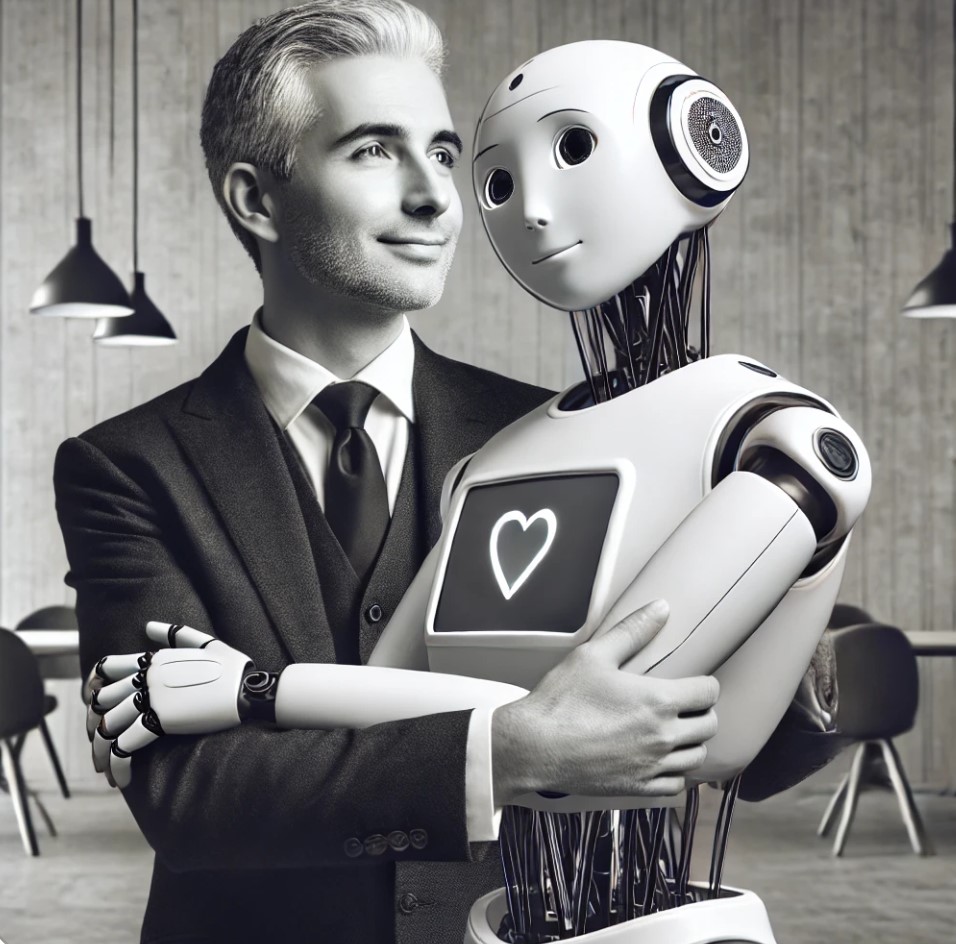AI transformation is not a question of ‘if’ but of ‘how’. It is about the efficient use of AI and its potential to drive innovation, achieve new levels of efficiency, and create a promising future for a company.
CEOs who recognise the potential of AI and foster a collaborative environment between humans and AI will emerge as winners and lead their companies into a successful future. The good news is that CEOs do not need to be qualified as AI experts. However, they need to recognise the benefits of technology for their business and its stakeholders. And they should also be aware of AI’s limits. Many managers assume that AI can take over many employees’ administrative tasks. This is not the case. Although AI is powerful and increases the efficiency of various work processes, it cannot replace human genius.
What AI cannot (yet) do – The fact is that AI needs help to develop new ideas. Its ‘ideas’ merely reflect the data with which it is fed. Even the most advanced systems cannot interpret this data as profoundly as humans. This emphasises the irreplaceable role of human creativity in business. Can AI draw analogies? No. Can it understand cultural and contextual nuances? Not.
AI as a tool, the human in the driving seat – Exploiting new opportunities and ensuring the company’s success takes more than AI technology. Above all, it needs human leadership, creativity, and intuition. Good leadership is more critical than ever in the age of artificial intelligence. Leadership means ensuring that the unique value of human genius is not ignored in an AI-enabled culture.
Humans are masters at grasping the more profound meaning and intricate nuances of, for example, business conversations. They can read between the lines, recognize intentions, and develop creative solutions far beyond AI’s capabilities. This emphasizes the unique value of human understanding and clarifies that humans’ role is irreplaceable in day-to-day work with AI, providing CEOs with a sense of reassurance about their role in the AI transformation.
Collaboration instead of blind AI hype – When integrating AI into a company, the synergy between humans and machines should be utilised to drive innovation and achieve a new efficiency level. Managers who seize this opportunity and promote collaboration between humans and AI will be the winners of the AI era.
Involving employees – Leaders should also understand why listening to employees’ concerns is essential and aligning their perceptions with the organisation’s goals. In addition, they should prevent territorialism by ensuring that all teams understand AI tools and the organisation’s transformation strategy rather than allowing one team to dominate in their use while others remain uninformed.
The five TO DOs for CEOs to create an AI-enabled culture:
–Vision and strategy: Develop a clear vision for using AI in the company and integrate it into a comprehensive plan.
– Take responsibility for the implementation and success of the AI transformation and do not delegate it to departments or external experts.
– Build understanding: Familiarise yourself with the possibilities and limitations of AI and share this knowledge within the company. You can only effectively lead the process of AI implementation if you are deeply involved in the subject matter.
– Bring people and AI together: Encourage collaboration between people and AI and ensure that AI complements rather than replaces employees. Offer extensive training opportunities for employees
– Ethical principles: Establish ethical guidelines for using AI in the company and ensure adherence.
Managers who accept these challenges will successfully lead their company into the future and create an organisation with an AI-enabled culture. Those who shy away from this will fall by the wayside.
